The possibility of modern ultralight camping, but might be just as aptly called extreme camping, with necessities pared down to bare minimum.
This sort of camping seeks to keep everything as lightweight as possible using minimum ultralight equipment yet still be in the realms of some safety and comfort. This form of camping requires only essential sleeping arrangements using options like either a bivy sack or an ultralight tent for protection from the elements.
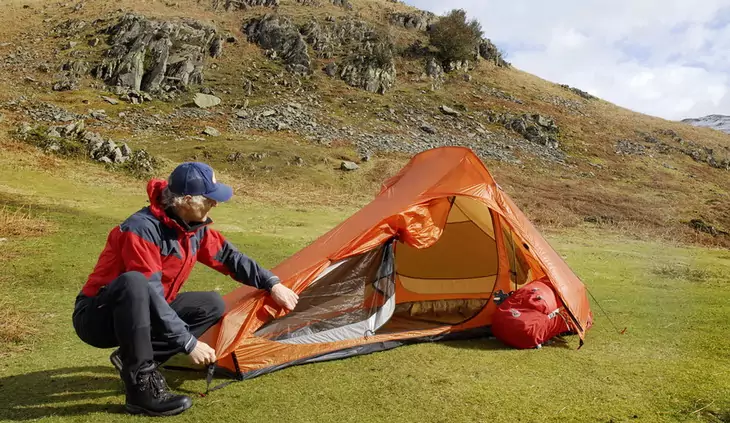
With this in mind there will be personal reasons for choosing bivy sack vs tent so let’s explore the choices with their advantages and disadvantages.
Advantages of ultralight backpacking
In general some advantages of ultralight backpacking include:
- It takes fewer tolls on your body. Lighter weights mean less stress on joints, especially feet, ankles, knees, hips, spine, and shoulders. If you are constantly carrying extra weight the compounding effects may have accumulating effects on your body, so any lesser weights should be appreciated. You may arrive at camp areas in fresher shape and lighter spirit.
- You can cover the extra miles easier. With lighter weights you can set goals for covering longer distances or climbing more difficult routes with more ease. Or perhaps it will just give you safer parameters for covering distances in the wilderness, so you arrive at camp areas with more time to spare.
- It keeps life on the trail simple. There is no point trying to “get away from it all” when you feel you have to “take everything including the kitchen sink”. The minimalist ethic simplifies the trip and helps to simplify your tasks and keep your mind free for enjoying every step.
When considering which sleeping arrangement is the best, take into account the various components – shelter, sleeping bag, and protection from the ground. All should combine in such a way to give you adequate shelter and to keep you warm and comfortable. Ultralight camping is a balance of keeping just the right amount of suitable equipment to remain safe, dry, warm, and happy yet being light enough to enjoy the journey you choose.
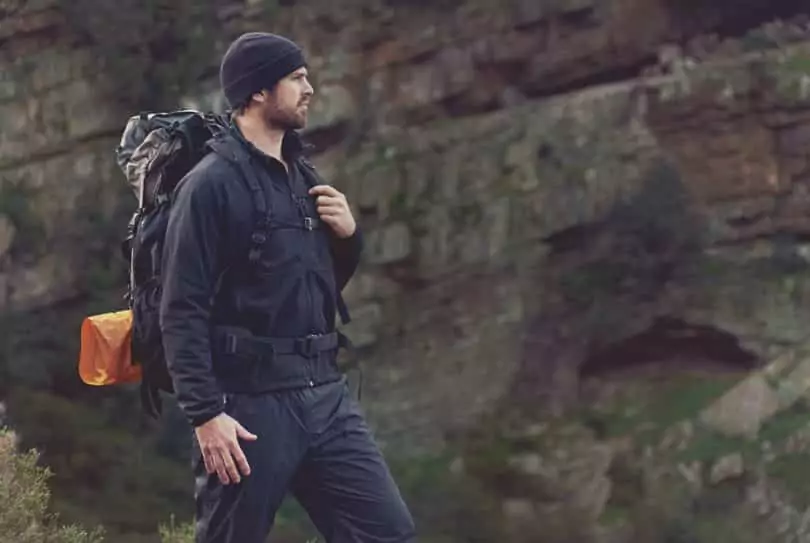
The whole of your backpack is connected as a survival system made up of shelter, clothing, eating (hydration, food, cooking), safety and packing method. Weight in sleeping gear can make up a considerable percentage of this allowance so the lighter the whole proportion the better overall. The shelter and sleeping part of the system should integrate for best possible options for shelter, protection, and safety. And whatever system you choose has to ultimately store yet be easily accessible in your back pack.
Bivouac /Bivvy/ Bivy Sacs/Sacks/Bags – the same by every name
A bivy sack is, in its simplest form, an ultralight waterproof cover for a sleeping bag that takes the same form to fit any sleeping bag. The most basic are form fitting, leaving little space at all around the body. Other more recent forms known as bivouac shelters have hoops or structure around the shoulder and head area that gives the occupier more head space to eat and to move and even roll over with ease without moving the sack layout.
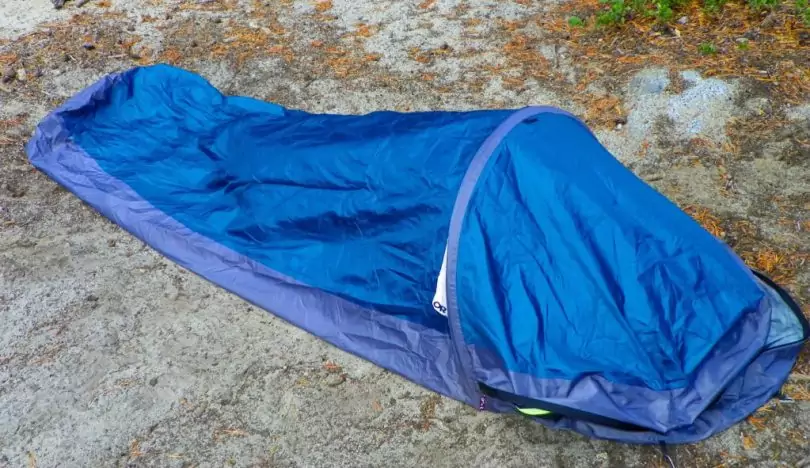
Some important advantages of versatile models are,
- The lightweight. Many models are lighter and smaller than any other options available yet still able to provide adequate shelter in most weather conditions. They certainly offer rapid opportunity to get warm quickly.
- The small packing size. The simplest of bivy sacks will take up little space in any backpack and don’t require extra equipment to set up.
- The rapid speed of setup and packing up. In critical weather conditions, especially in stormy or snowy temperatures, they are simple and rapid to set up compared to best ultralight tents. This factor could be especially important in emergency situations or if decamping in the dark is necessary.
- The small space required for placement. These sacks are able to be laid out in very small flat areas, with minimal space for lying down for instance in narrow rock ledges, cramped snow caves, or small flat areas on rocky ground.
- The lower cost compared to single person tents. If costs are a critical factor, these sacs offer good features for more economical costs.
We can use the above aspects as criteria for evaluating which models are more suitable for various situations.
Bivy Sac Fabrics and Construction
Bivy sacks are usually designed in what is referred to as the mummy shape which closely follows body shape, being wider at the shoulders tapering towards the feet with closure over the head. This form fitting shape is what enables the sack to provide so much warmth.
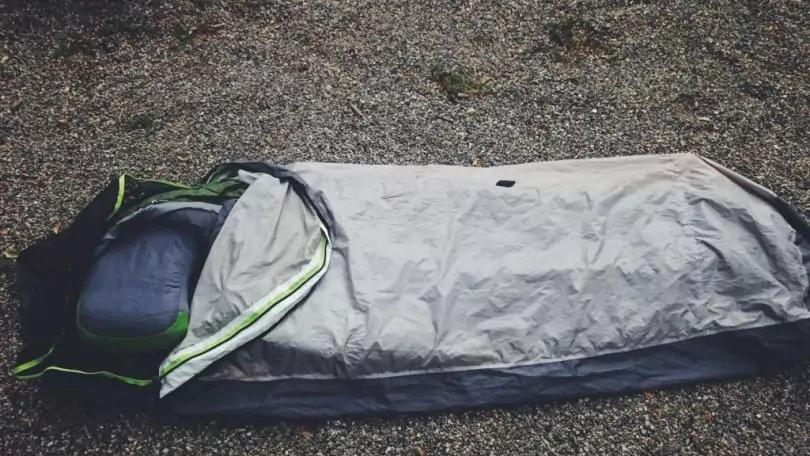
With the advent of modern synthetics, manufacturers have been able to produce very strong, light-weight fabrics, that provide wind and water proofing that have, so far, not been possible with more traditional fabrics like canvas or oilskin that were used for old style camping swags. In fact the biggest problem with these synthetic fabrics has been that they are so waterproof, they trap moisture completely which builds up sweat and condensation.
A lot of moisture is lost through our breath and when holed up, in a well sealed bivy sack to keep out the cold weather elements, this moisture condenses inside the sack itself. The sleeping bag can then become quite damp and that can set up a chain reaction so the camper inside starts to get chilled. When sealed sarcophagus like inside one, condensation build up can a problem for comfort and warmth.
To offset this major drawback, the sack manufacturers had to add some method of ventilation. In warmer weather this may be achieved simply by leaving the closure open around the face, but this defeats the purpose of staying warm in colder temperatures so actual construction materials are the key to overcoming this problem.
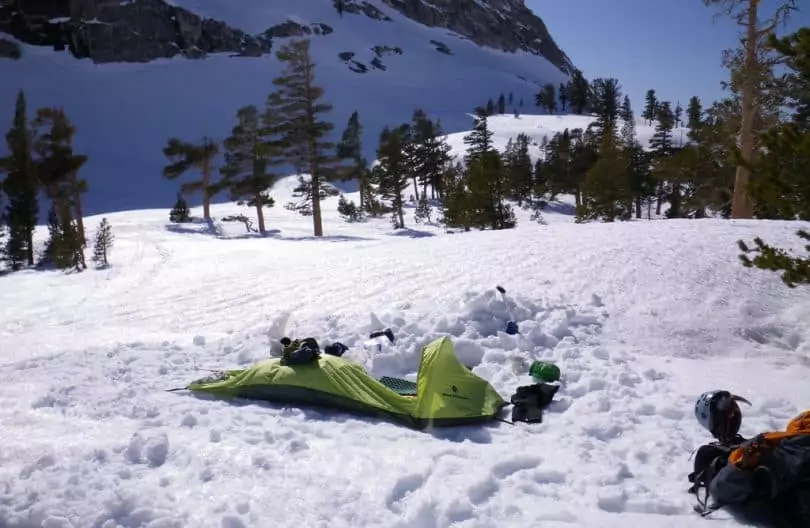
Some sacks also have insets of mesh that can be left open around the face area to allow ventilation but to keep any bugs at bay. In fact, when insects are an issue, there are some models constructed almost entirely of mesh as insect protection which would prove effective when sleeping in the warm open air or under a tarp.
The relatively new generation of synthetic fabrics has one way “breathability”, which means moisture is allowed to evaporate from inside to outside yet the weave is not permeable from the outside. One of the first fabrics of this type was the trademarked Gore-Tex so similar fabrics are often generically referred to by the same name. The ground sheet side of the sack is usually constructed of totally impermeable material while the upper is of the breathable fabric.
If a bivy sack is to be your camping choice give some thought to what you will actually be sleeping in, which style and weight of the bag. Try to choose a bag that will be warm enough to get you through the planned trip rather than any that might cause overheating during the night. Note also the down sleeping bags, while super for warmth, do not function well if damp inside a bivy sac so lightweight synthetic might be a better choice in some areas.
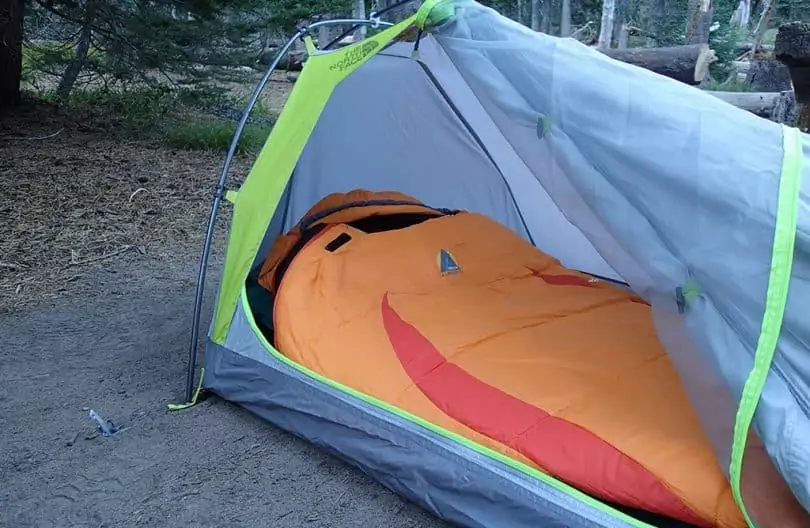
“Ripstop” threads are also often woven into the fabric for durability. This is where an extra strong thread is woven in at regular intervals, for instance, every ½ or ¾ inch, to resist tearing should the fabric suffer damage. This way the fabric can be kept at a lighter weight but still have better durability.
Packing it All In
Again the lightweight modern fabric options have a lot do with the suitability of bivy sacks as opposed to ultralight tents. They will be lighter than a tent because they don’t contain so much fabric and because they don’t require extra fixing stakes, poles or ropes unless they are the more structures bivouac shelter style.
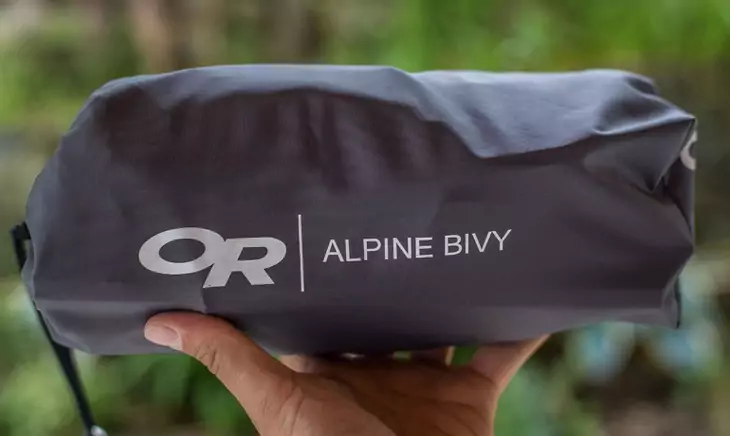
Sacks should also pack down smaller than a tent. When backpack space is at a premium and everything for a multiday hike has to be carried on your back, it is an advantage to be able to take extra crucial gear even if weight is not so much a factor.
But are You Comfortable?
To bivouac, when referring to non military activity, means to use a natural, temporary shelter like a rock overhang, a shallow cave or a snow cave that does not utilize any tents. All you have to do is find a suitable place to lay everything out. Bivy sacks are quickly arranged with a chosen sleeping bag and mat inside, especially if using a natural environment feature.
At the other extreme, if you are in an area where camping spaces are few and far between, being able to lay out a sack and sleeping gear may be a huge advantage on a remote rocky ledge. This might also be high in snowy alpine regions where bivying in a dug out snow cave may be perfectly cozy.
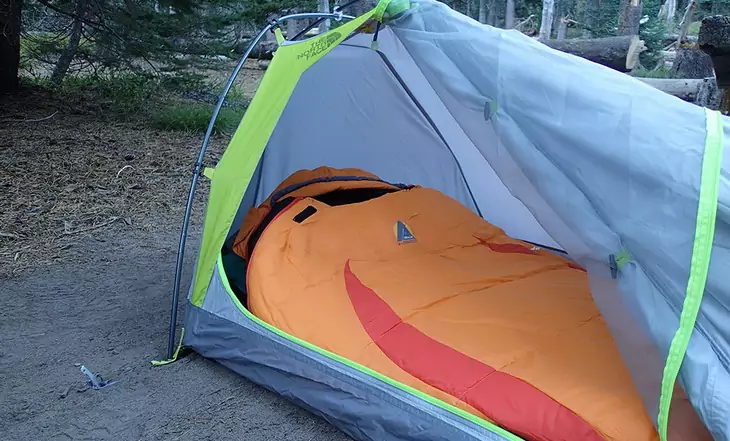
However, the usual lack of storage places for equipment, the lack of space in the sackc and little option for staying warm unless lying down in it, might be quite restricting for overall comfort. If however, you prefer to sleep close the nature in pleasant environments and ultralight camping is high on your priority list, bivy sacks may just be for you. Otherwise you might do well to check out what options are available for single person tents.
Solo Tent Options
The term tent can vary from single layer pole constructions, not much more developed than a well pitched tarp, into a double walled roomy construction able to be well anchored to the ground to withstand high mountain winds.
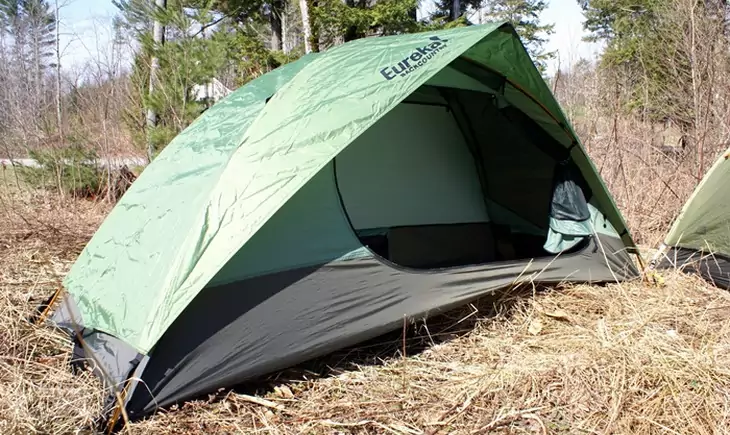
For the purposes of comparison to bivy sacks in this article I am referring only to lightweight single person tents as those are similarly only suitable for one person. Furthermore, I am not considering tarps in this instance, although they can offer protection similar to basic tents.
Some important considerations for ultralight tents are:
- Level of comfort. When it comes to being comfortable in a number of environments a tent offers room for relaxation, movement, privacy, warmth, ventilation, shelter, and equipment storage.
- The lightweight. They may not be as lightweight as sacks, but there is not a huge difference and not enough to make a difference unless very critical when it comes to four-season sacks.
- The small packing size. If the tent construction can be made utilizing trekking poles, pack space can be kept free for other items.
- The rapid speed of setup and packing up. Most modern tents have very simple, rapid construction system, so while they may take longer to set than sacks, they still only take a few minutes.
- The small space required for placement. They may not be able to be pitched on rock ledges, but they are suitable for most environments.
For the best ultralight tents, see our article on the best solo tent to find out.
Modern Fabrics for Ultralight Options
As with sacks, ultralight tents are only possible because of modern synthetic fabrics which in the case of tents, is usually some form of nylon which is naturally water repellent. The difference between less and more expensive tent fabric is in the coatings for further weatherproofing. The quality of these coatings varies in cost and longevity, on a scale from the most expensive and best being silicone, through polyurethane down to least expensive acrylic.
Ultraviolet (UV) light causes most fabrics to deteriorate so UV block factors are also added to coatings, but because tents are usually left pitched for longer periods, they will have a shorter life span than sacks, that are usually packed away or rolled up when not in use.
Also, light weight and durability can be enhanced by using ripstop threads in the weave, where the tougher (thicker and heavier) threads spaced throughout warp and weft resist tearing. A small hole is easily repaired compared to a long rip. One trait of nylon is that it stretches when wet, so guy ropes need to be tightened if it is raining, loosened when drying
One consideration that can affect whether using an ultralight tent serves a lightweight purpose better than a bivy sack is to utilize equipment for more than one purpose where possible. Many hikers and backpackers these days use trekking poles so if you are able to substitute trekking poles for tent poles this reduces pack weight and simplifies packing systems.
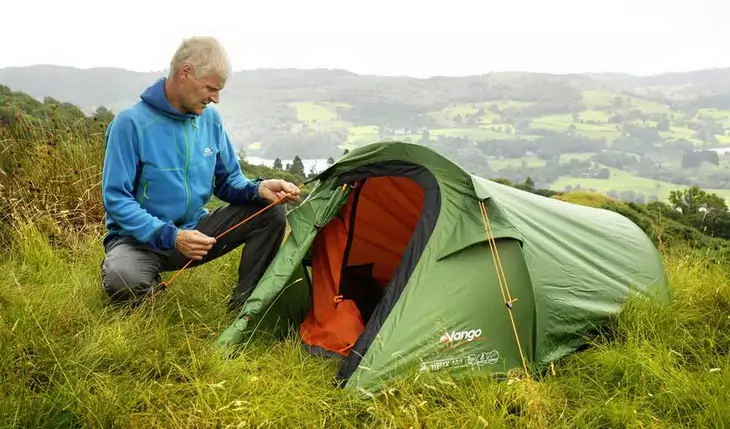
Trekking poles help keep balance on rough terrain and also spread weight from lower limb joints back onto upper body. If you are choosing to use poles for walking as well as for tent supports it is best to go for adjustable length poles for flexibility of tent set up. Robust three-piece adjustable poles are the best option regarding that as opposed to lightweight fixed length or adjustable two-piece. You can read the best reviews of stellar trekking poles by clicking on the link for more information.
If you choose a tent with dedicated tent poles, which can also accommodate trekking poles, you can make a choice which to use regarding the trip you are making. If for instance you were planning day hikes from a base camp, it may be annoying to have to leave your trekking poles as tent structure, or to have to break the tent down every time you head out.
Tent Styles are not All Equal
Single Layer Pyramid Tents
The most basic of tenting options are pyramid tents, where a pole supports a single layer of waterproof fabric with some sort of waterproof flooring system, which may optionally, and possibly be an insect protection mesh. If a sack is not to your liking, but you want a cheap ultralight option in milder or dry weather, these single layer tents may be the best option. They can be set up relatively quickly and simply and required skills are easily learned.
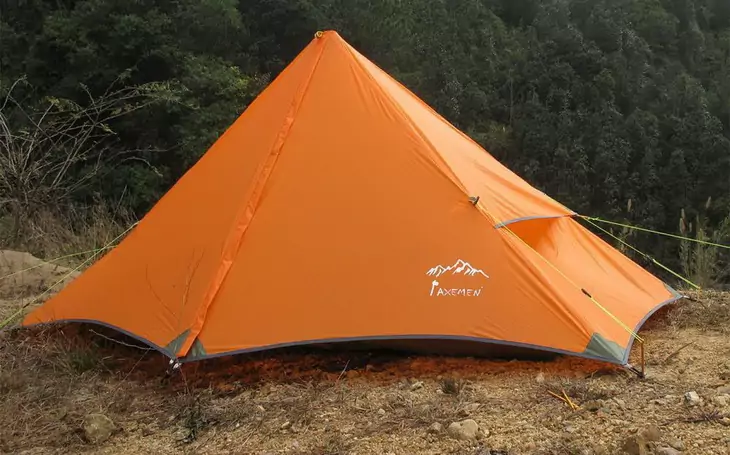
These do offer privacy, space to move and eat in, as well as protection from weather elements, but they will not be as warm as sacks, yet they may suffer from the same condensation problems. Also, if the tent surface is wet, any physical touch may lead to leakage.
Double Layer Tents
When it comes to comfort and protection from any environmental elements ultralight double walled tents are hard to beat. They are relatively warm as one person’s body heat in a single tent is usually enough to keep you warm with a good sleeping bag and sleeping in most temperatures including alpine. The inner layer prevents condensation build up from dripping down in wet or humid conditions.
Double walled tents provide privacy and some have vestibules which allow cooking in rough weather. You also have space to store equipment away from sunlight and rain. Most also incorporate insect mesh which so there can be double layers in the inner wall to allow ventilation yet keep bugs out.
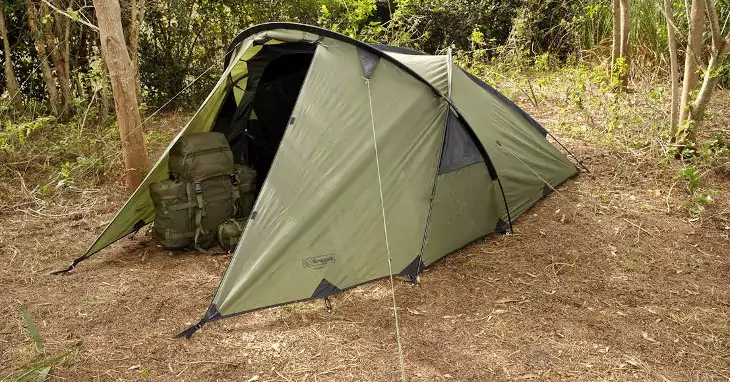
Ultralight tents with dedicated poles are by far the easiest to pitch in most environments for most people. They require fewer skills to be comfortable and confident in any situation and because they set up the same every time, the time to pitch the tents quickly becomes a minimum. If you do choose to camp in a tent it may worth considering packing a lightweight bivy sack for emergency situations, especially one with bright colors and reflective surfaces. See our article on ultralight backpacking gear to travel light on your next journey.
So Where does this Leave Tents vs Bivy Sacks?
Imagine you are planning a long hike, the weather is miserable and now you have achieved your goal all you want to do is set up camp, cook a nourishing meal and collapse into bed. With whatever you have to protect yourself, will you be able to set up camp, prepare food and stay comfortable until you have to continue your hike? Which shelter system will you feel confident enough to set up camp with, and safe enough against the elements?
You are the only person who can answer those questions, so when considering, make an honest appraisal of your wilderness skills before deciding. However, it is advisable to err on the side of caution. An ultralight tent will most likely you better options for being comfortable and secure in an outdoor environment. For multi day hikes with unpredictable or changeable weather conditions, it is quite hard to go past the comforts of an ultralight solo tent in comparison to a bivy sack.
If you are experienced, confident and have high skill levels you may feel your judgment is up to the most difficult of environments and elements you may opt for the ultra of ultra light camping options with a bivy sack. Whatever you decide, happy and safe camping. For the best waterproof and efficient bivy sacks, click on the link to see our article.
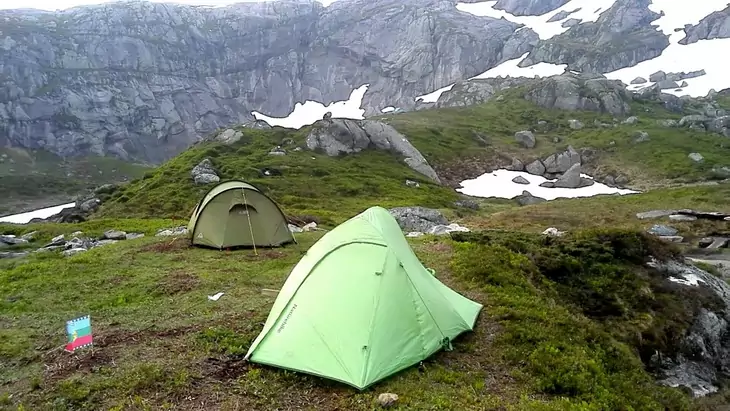
One more thing before we go! If you found our article informative and useful, feel free to share it with your friends, and you can also leave a comment in the comments section below, if you have the feeling that maybe we missed out on an important information. We would love to get a feedback from all our readers.

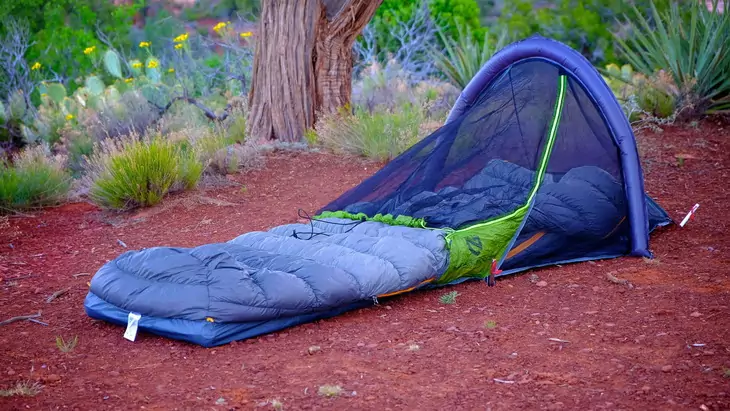

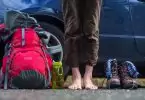

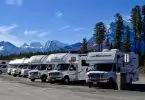
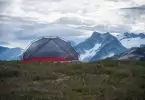

I picked up a bivy sack at a swap meet the other week because it looked useful for short-notice weather shelter. I think after reading this article and assessing my own skills, I’ll keep using my solo tent for sleeping. But if I can fit it, bringing a bivy sack sounds like a great idea for emergencies.
Whatever works for you, friend!
I much prefer tents for their privacy and space, but it looks like there are some comparable bivy sacks out on the market that could give me the same thing. I suppose this would vary along with everything else, but is there a particular brand known for durable bivy sacks?
No. Just look for something durable.